Google regularly updates the algorithms responsible for running search and indexing — usually multiple times per day. From some 400 changes in 2010, Google made more than 3200 changes in 2018, and it’s normal to expect that number to have continued to increase in the years since then.
Usually these changes go unnoticed and unannounced. They affect very specific parts of search.
However, some changes can affect the core of how search works and can have a broader impact on both search and website rankings. Since late 2019, Google has started announcing major updates before they’re put into production, giving SEOs a heads-up before the impact starts to show.
Past core updates that have had a significant impact include:
- December 2020 Core Update
- May 2020 Core Update
- January 2020 Core Update
- September 2019 Core Update
- June 2019 Core Update
- March 2019 Core Update
- “Medic” Core Update — August 2018
- Unnamed Core Update — April 2018
- “Brackets” Core Update — March 2018
- RankBrain — October 2015
As they are broad-reaching, these are different from the major updates that address specific issues: BERT, Pigeon, Panda, Pirate, Phantom, Fred…
Core updates can’t be predicted… unless, like Lily Ray, you keep tabs on Marie Haynes’s vacation schedule:
I made this very scientific flow chart about how to predict when Google Core Updates will occur, based on several years of actual data… what do you think, @Marie_Haynes and @glenngabe? pic.twitter.com/TFDdISLgZh
— Lily Ray 😏 (@lilyraynyc) June 2, 2021
The 2021 June Core Update
Google announced an upcoming June Core Update on Twitter on June 2nd:
Later today, we are releasing a broad core update, as we do several times per year. It is called the June 2021 Core Update. Our guidance about such updates is here:https://t.co/e5ZQUA3RC6
This will be followed by the July 2021 Core update. Here’s more information about that…
— Google SearchLiaison (@searchliaison) June 2, 2021
This will be the first of two updates: as some of the changes that were planned for June won’t fit into the first batch, a second set of changes will be deployed about a month later, in July, 2021.
Notably, Google states:
Most sites won’t notice either of these updates, as is typical with any core updates. … Of course, any core update can produce drops or gains for some content. Because of the two-part nature of this release, it’s possible a very small slice of content might see changes in June that reverse in July. … As a reminder, nothing in a core update is site-specific.
The Roll-Out
The official roll-out began on June 3rd, 2021.
As Danny Sullivan confirmed on Twitter, the roll-out may take 1-2 weeks to complete.
June 3
Few changes were observed during the first day of the roll-out. Major tools showed some volatility, but nothing major.
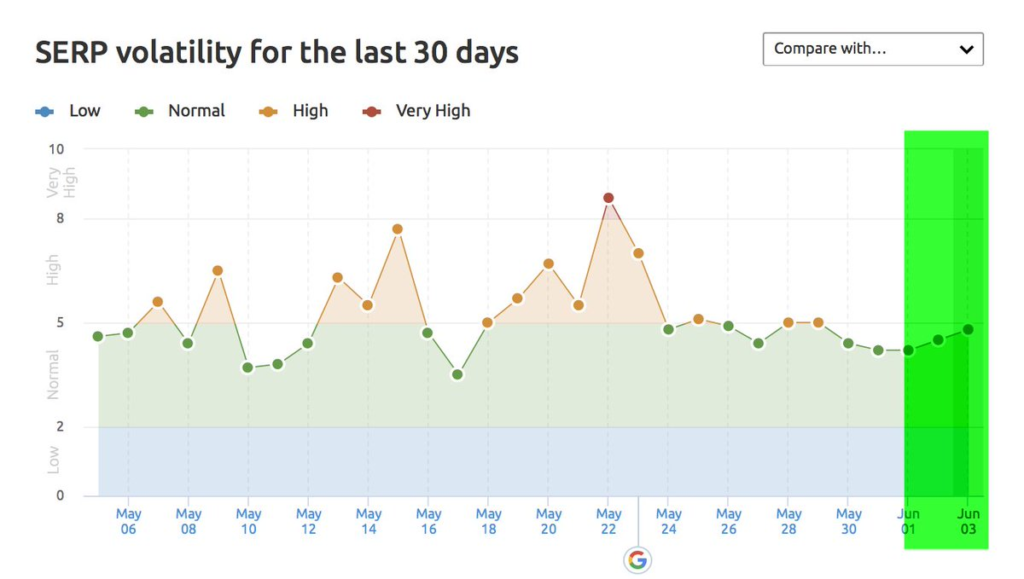
Source: Rob May on Twitter
Initial shifts seemed to show “little to no movement”, as stated by Glenn Gabe within the first half of the day:
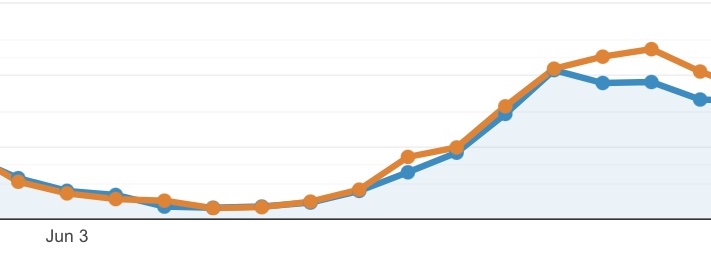 Source: Aleyda Solis on Twitter
Source: Aleyda Solis on Twitter
Marie Haynes reminded SEOs that this is normal; effects are usually seen within a few days.
June 5
By June 5th, a few days after the initial announcement, there was significant movement in SERP volatility charts from different tools:
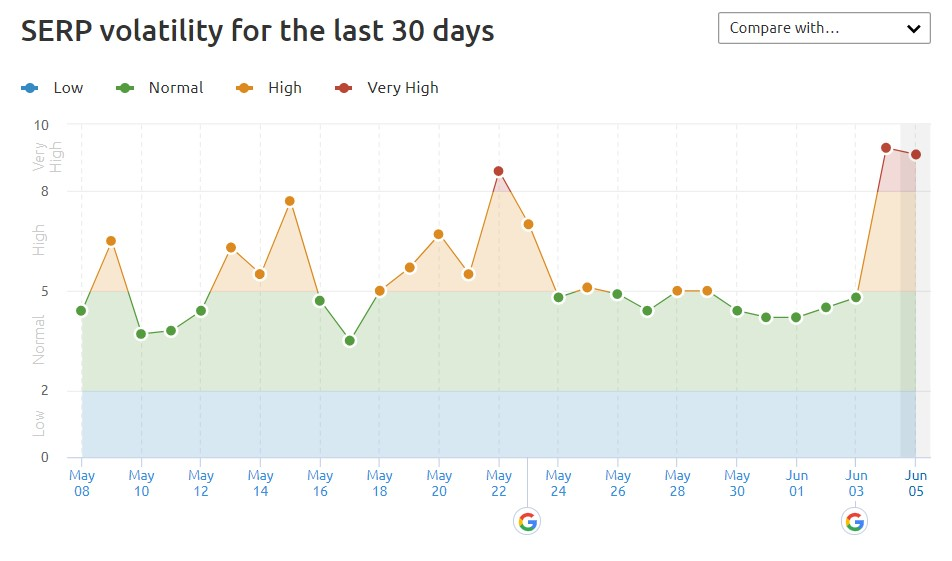 Source: Navdeep Soni on Twitter
Source: Navdeep Soni on Twitter
June 6
By Sunday, June 6th, there were definite signs that the June Core Algorithm Update was impacting SERP pages.
On Twitter, Glenn Gabe posted examples of the first improvements and drops he observed among sites he works with.
Mordy Oberstein noted that, visually, the importance of the update is already clear:
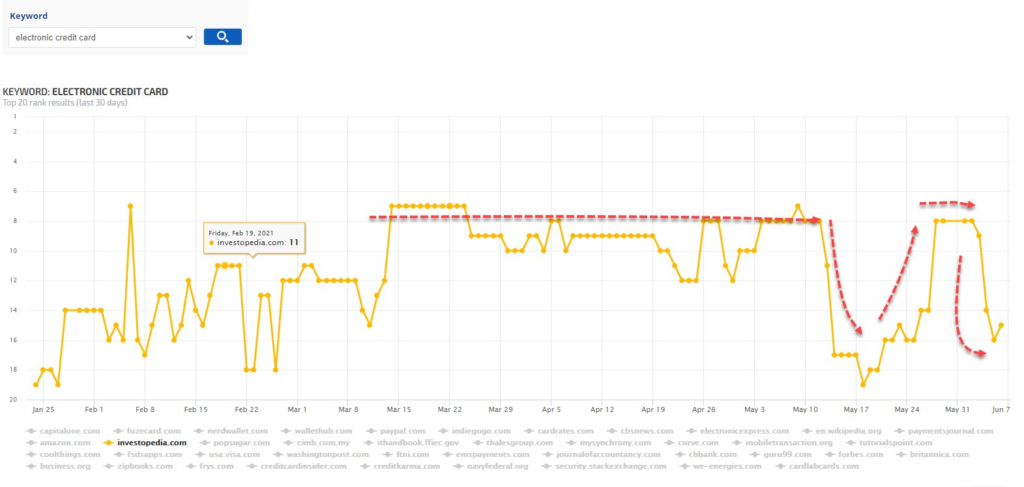 Impact on specific keywords of the June Core Algorithm Update (right-most red arrow) compared to other unconfirmed updates earlier this year. Source: Mordy Oberstein (Twitter)
Impact on specific keywords of the June Core Algorithm Update (right-most red arrow) compared to other unconfirmed updates earlier this year. Source: Mordy Oberstein (Twitter)
June 7
By June 7th, changes were visible around the world.
Dan Petrovic, from Dejan SEO in Australia, noted that this core update is shaping up to be one of the biggest since December 2020, and that changes were visible in .au domains even before they began to be measurable in .com domains.
The German twitter account for Sistrix also observed the first shifts and changes in search results, stating that many of the affected industries were not ones that we’ve seen recently, something which might set this core update apart from previous ones. As they stated, “This indicates that Google is using new approaches to rank domains and not just feeding new data to the old algorithms.”
Some sites have begun to see more significant movement, such as this site reported by Stephen Hockman, where traffic has nearly doubled:
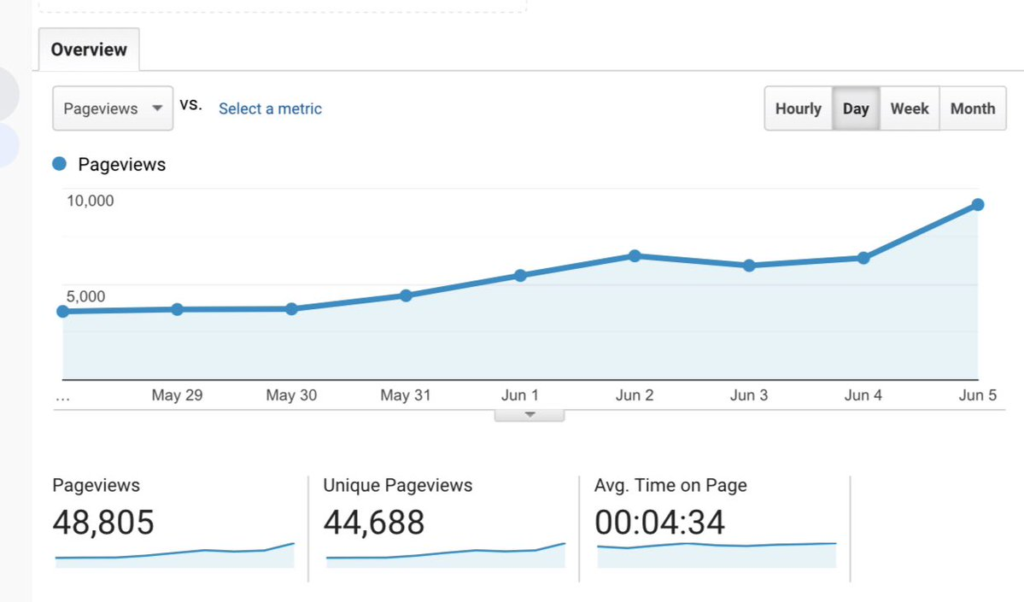 Source: SEO Chatter Blog (Twitter)
Source: SEO Chatter Blog (Twitter)
June 8
In contrast to some of the observations over the previous days, Lily Ray has found “big movement” among product review sites during this core update (especially in the technology / consumer electronics categories)”, notably with sites that were impacted by the December 2020 Core Update.
Glenn Gabe also continues to monitor changes, and like Lily, has been reporting on sites with impressive changes, both positive and negative.
We also have an insider tip on the current algorithm update:
I heard it from @JohnMu that if you are fully jabbed, google gives you a little boost over those SEOs that aren’t.. https://t.co/2TfNwDAxgQ
— Dom Hodgson (@TheHodge) June 8, 2021
What to do if your website is affected by a core update
If you want a little tip to find out whether or not you’ve been affected, Lily Ray offered a reminder to check your Discover tab in GSC – core updates can affect your visibility there.
But if you’ve been affected by a core update and don’t know what to do next, the official Google information from 2019 stresses general best practices.
However, with this update, Kristine Schachinger published some tips to diagnose a drop in traffic associated with a core update:
- Go to GSC. Compare X days before the drop & X days after the drop. Look for what queries were devalued. Why? CUs affect sites at the query level. ie it knows what a YMYL query is… Start there. Look for root terms. So if all my dropped pages had mushrooms in it, look for “shroom”. This is a root term. Then take those pages and run them through a crawler to look for severe technical issues, especially page speed, redirect loops, etc. Fix these.
- Also check for query shifting. Google might move your term to a longer less trafficked query. Ex. “nightshade vegetables” could change to “nightshade vegetable list.” Write new content for the previous term. Add hub pages if you don’t have them.
- Finally, check for proper site architecture. If it does not exist, create it. These three things have recovered every CU site I have worked on. Most of it in the technical space.
- ALWAYS start with technical first. If Google cannot properly crawl and index your site, the rest does not matter :).
This is very similar to the advice that Koray Tuğberk GÜBÜR gives in his earlier article on how to win with every Google Core Update.
Furthermore, Kristine’s advice to focus on general, query-related patterns, rather than technicalities in your site’s specific case or history, makes additional sense in the context of an update that does not target specific sites. Remember, core updates do not penalize your site for something specific that you have or haven’t done.
Finally, keep in mind that some of the changes you’re seeing now might be reversed with the second half of this update, coming in July.

